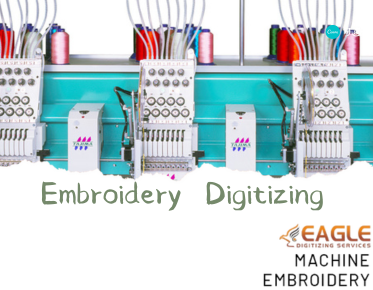How To Prevent Puckered Embroidery
Embroidery is a beautiful art form that can add elegance and personalization to a wide range of textiles. However, one of the most common issues embroiderers face is puckering, which can ruin the appearance of the final product. Puckering occurs when the fabric gathers or wrinkles around the stitches, leading to an uneven and unattractive finish. Understanding the causes of puckering and implementing effective strategies can help you achieve smooth and professional-looking embroidery every time.
Understanding the Causes of Puckering
Puckering can be caused by several factors, including fabric tension, thread tension, stabilizer issues, and improper hooping. Each of these elements plays a crucial role in the embroidery process, and any imbalance can lead to puckering. For instance, if the fabric is not hooped tightly enough, it can move during stitching, causing the fabric to gather. Similarly, incorrect thread tension can pull the fabric too tightly, resulting in puckering.
Fabric and Thread Tension
Achieving the right balance between fabric and thread tension is essential to prevent puckering. The fabric should be taut in the hoop but not stretched to the point of distortion. Likewise, the thread tension should be adjusted according to the type of fabric and thread being used. For delicate fabrics, a lighter tension is often required, while heavier fabrics may need a tighter tension. Regularly checking and adjusting the tension settings on your embroidery machine can help maintain consistency and prevent puckering.
Choosing the Right Stabilizer
Stabilizers provide support to the fabric during embroidery, preventing it from shifting and stretching. Choosing the right stabilizer is crucial for avoiding puckering. For lightweight fabrics, a cut-away stabilizer is often recommended, as it provides more support than tear-away options. Additionally, using a temporary adhesive spray can help keep the stabilizer in place, reducing the risk of movement during stitching.
Proper Hooping Techniques
Hooping is a critical step in the embroidery process, and improper hooping can lead to puckering. The fabric should be hooped tightly and evenly, with no wrinkles or slack. Using a hoop that is the right size for your design can also help maintain tension and prevent puckering. For challenging fabrics, such as knits or stretchy materials, using a hooping aid or clamping system can provide additional support and stability.
Digitizing for Embroidery
The digitizing process plays a significant role in the final outcome of embroidery. Poorly digitized designs can lead to excessive density and uneven stitching, both of which contribute to puckering. Working with a professional embroidery digitizing service can ensure that your designs are optimized for the fabric and thread you are using. Companies like Eagle Digitizing offer expert digitizing services that focus on minimizing thread breakage and ensuring smooth sew-outs, which can significantly reduce the risk of puckering.
Using Quality Materials
Investing in high-quality threads, fabrics, and stabilizers can make a significant difference in the outcome of your embroidery projects. Quality materials are less likely to cause issues such as thread breakage or fabric distortion, both of which can lead to puckering. Additionally, using materials that are compatible with each other can help ensure a smooth and professional finish.
Testing and Adjustments
Before starting a new embroidery project, it's a good idea to conduct a test run on a scrap piece of fabric. This allows you to make any necessary adjustments to the tension, stabilizer, and hooping techniques before working on the final piece. Testing can help identify potential issues and provide an opportunity to make corrections, reducing the risk of puckering in the finished product.
Advanced Techniques and Tools
For those looking to further enhance their embroidery skills, exploring advanced techniques and tools can be beneficial. For example, using a digitizing software that offers features such as automatic density adjustment and stitch simulation can help create designs that are less prone to puckering. Additionally, attending workshops or online courses can provide valuable insights and tips from experienced embroiderers.
Professional Embroidery Services
If you're struggling with puckering or want to ensure the highest quality results, consider partnering with a professional embroidery service. Eagle Digitizing, for example, offers a range of services tailored to meet the needs of embroiderers, from digitizing to providing high-quality sew-outs. Their expertise in the industry allows them to deliver designs that minimize puckering and enhance the overall appearance of the embroidery.
Looking Ahead
As technology continues to advance, the embroidery industry is likely to see new tools and techniques that further reduce the risk of puckering. Innovations in digitizing software, embroidery machines, and materials will provide embroiderers with more options and greater control over their projects. Staying informed about these developments and continuously refining your skills can help you achieve the best possible results in your embroidery endeavors.
Whether you're a hobbyist or a professional, understanding the causes of puckering and implementing effective strategies can significantly improve the quality of your embroidery. By focusing on proper tension, stabilizer selection, hooping techniques, and digitizing, you can create beautiful, smooth, and professional-looking embroidery that stands the test of time.
.png)


